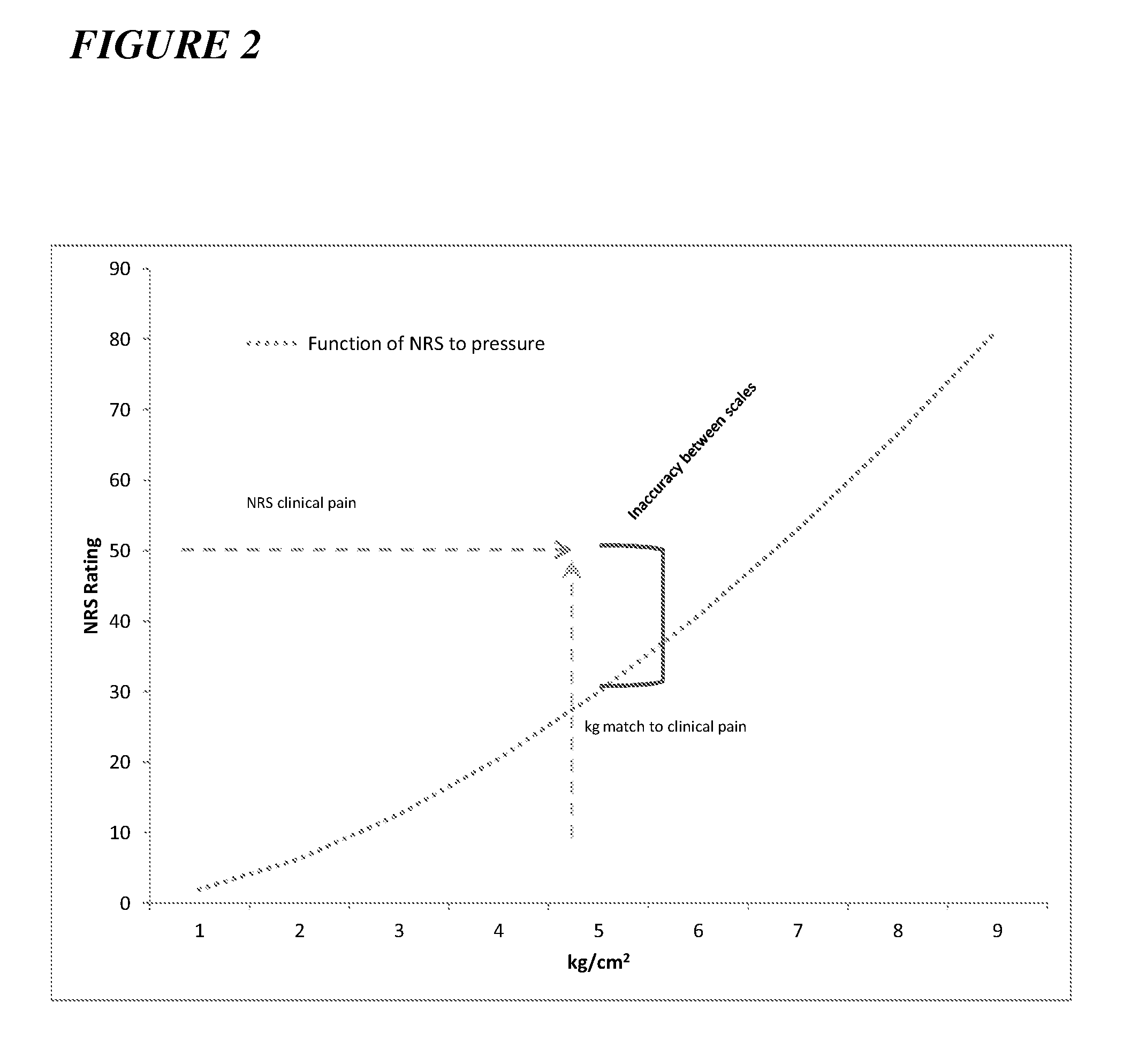Training methods for improved assaying of pain in clinical trial subjects
a clinical trial and pain technology, applied in the field of training methods for improving the assaying of pain in clinical trial subjects, can solve the problems of reducing the cost and time of conducting the trial, and reducing the probability of false negative trials, so as to improve the statistical power and accuracy of clinical trial results, improve the accuracy of pain reporting of subjects
- Summary
- Abstract
- Description
- Claims
- Application Information
AI Technical Summary
Benefits of technology
Problems solved by technology
Method used
Image
Examples
Embodiment Construction
I. Definitions
[0021]As used herein, the term “natural index pain” or “index pain” refers to the natural pain perceived by a subject as a result of a disease / disorder, injury and / or surgical procedure. Exemplary index pain includes, without limitation, knee pain from osteoarthritis.
II. Pain Training Overview
[0022]In one aspect, the present invention provides methods of training a subject to report pain. Such methods generally involve: determining the reported pain threshold and tolerance levels of the subject in response to an evoked pain stimulus; determining the reported pain of the subject in response to a natural index pain using a standard pain reporting scale; determining the response profile of the subject to noxious stimuli using a standard pain reporting scale, wherein the noxious stimuli intensity are between the pain threshold and tolerance levels of the subject; determining the pain reporting accuracy and / or reliability of the subject; and providing instructional feedback...
PUM
 Login to View More
Login to View More Abstract
Description
Claims
Application Information
 Login to View More
Login to View More - R&D
- Intellectual Property
- Life Sciences
- Materials
- Tech Scout
- Unparalleled Data Quality
- Higher Quality Content
- 60% Fewer Hallucinations
Browse by: Latest US Patents, China's latest patents, Technical Efficacy Thesaurus, Application Domain, Technology Topic, Popular Technical Reports.
© 2025 PatSnap. All rights reserved.Legal|Privacy policy|Modern Slavery Act Transparency Statement|Sitemap|About US| Contact US: help@patsnap.com



